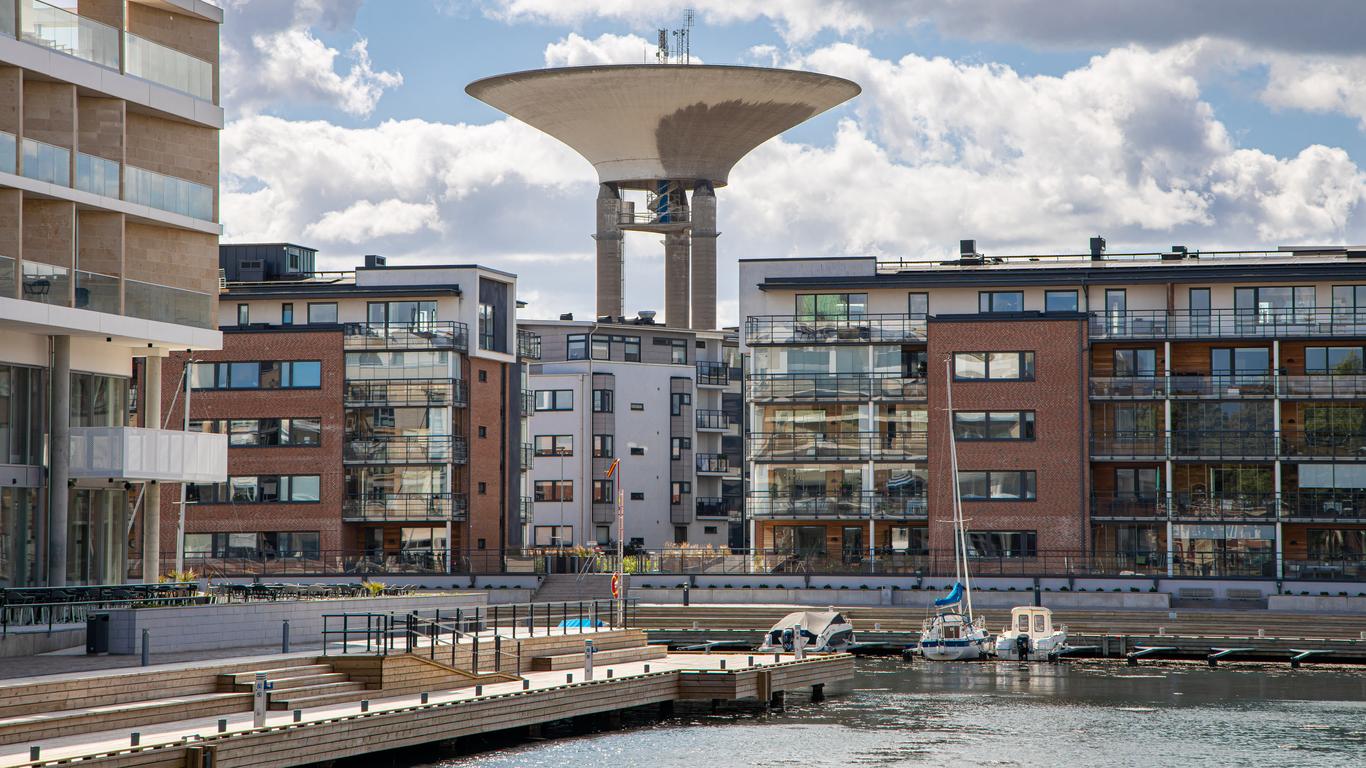Founded by the Danish King Eric of Pomerania in the 15th century, Landskrona is an important military and commercial town on the Øresund. It became part of Sweden in 1720 and boasts one of the best natural harbours in Skåne, as well as a heavily fortified citadel that’s been beautifully preserved.
Things to do in Landskrona
Delve into the past at the Landskrona Museum, which explores the town’s industrial history, Sweden’s advertising industry and the world of Stone Age men. A highlight is the collection of works on the theme of non-violence by Carl Fredrik Reuterswärd. The Landskrona Museum is a short stroll from the Landskrona Art Gallery, which occupies a striking, glass-walled building dating back to 1963.
Dominating the skyline of Landskrona are the twin towers of Sofia Albertina Church, which was constructed in the mid-18th century on the design of Carl Hårleman. Named after Gustav III of Sweden’s sister, its stunning interior features a 12th-century font and chandeliers from Landskrona’s original house of worship, the medieval Saint John the Baptist’s Church.
Surrounded by several moats in the north of town is the Landskrona Slott, a 16th-century citadel that remains largely intact. Join a guided tour to visit the western tower dungeon and learn about the fortress’s role as a forced labour institution for women in the early 20th century. A highlight of the citadel is its allotment garden, which is believed to be the oldest in Sweden.
Getting around Landskrona
Landskrona is a 25-minute drive from Helsingborg and 30 minutes from Malmö. Malmö Airport is 45 minutes away and has flights to destinations across Europe. Trains connect to Landskrona railway station and buses travel throughout the town. The centre of Landskrona is compact enough to explore on foot.





